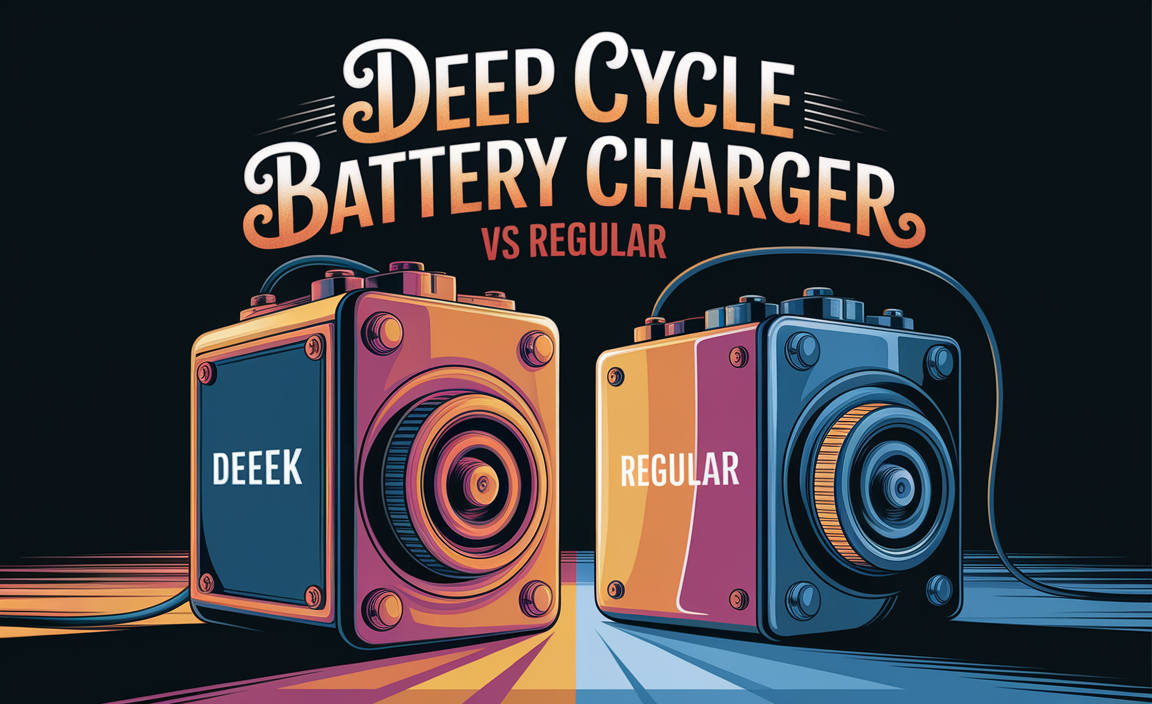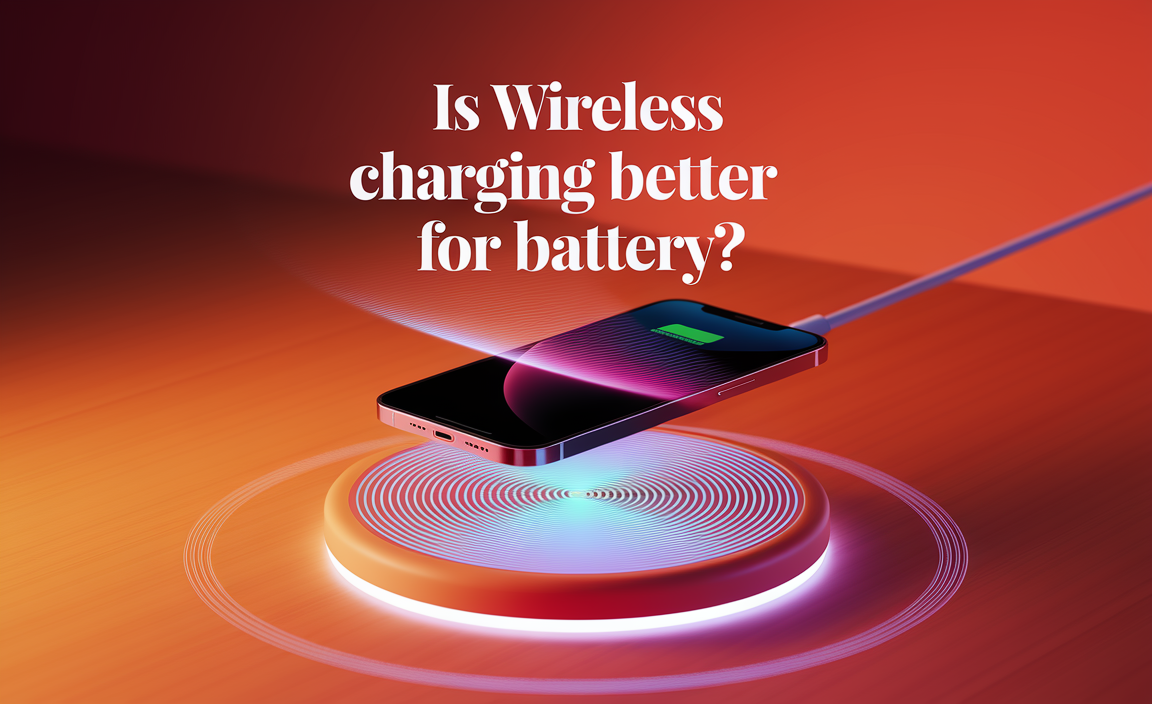A car battery charger typically costs between $30 and $200. The price depends on its features, type, and brand. Simple trickle chargers are cheaper, while advanced multi-stage chargers with diagnostic capabilities cost more. Choosing the right one ensures your car battery stays healthy and reliable.
Is your car battery giving you trouble? Don’t you hate that sinking feeling when you turn the key and all you hear is a click? A dead car battery is a common headache, but thankfully, a car battery charger is a simple solution. Knowing how much to spend and what to look for can save you money and hassle. This guide will walk you through everything you need to know about car battery chargers, from their cost to how to pick the perfect one for your needs. Let’s get your car back on the road!
Understanding Car Battery Chargers: What You Need to Know
A car battery charger is a device that replenishes the electrical charge in your car’s battery. Over time, batteries can lose their charge due to various reasons, such as leaving lights on, infrequent driving, or simply the battery getting old. A charger helps bring that charge back up, preventing the dreaded dead battery scenario.
Several types of chargers exist, each with different capabilities and price points. Understanding these differences is key to making an informed decision. We’ll look at the most common types and what makes them unique.
Types of Car Battery Chargers
When you’re looking to buy a car battery charger, you’ll encounter a few main types. Each serves a slightly different purpose and comes with its own set of benefits and costs.
1. Trickle Chargers
These are the simplest and usually the most affordable chargers. A trickle charger delivers a very low, steady amount of current to the battery. They are designed for maintaining a battery’s charge over long periods, especially for vehicles that aren’t driven frequently, like classic cars or seasonal vehicles. They are not intended for reviving a deeply discharged battery quickly.
2. Automatic/Smart Chargers
Also known as multi-stage chargers, these are the most popular choice for everyday drivers. They use microprocessors to monitor the battery’s charge level and adjust the charging current accordingly. They typically go through several stages: diagnosing the battery, charging it at an optimal rate, and then maintaining the charge once full. This prevents overcharging, which can damage the battery. Smart chargers are great for both maintaining and reviving moderately depleted batteries.
3. Manual Chargers
These are more basic than smart chargers and require some supervision. You usually have to set the amperage and monitor the charging process yourself to avoid overcharging. They can be powerful for quickly boosting a dead battery but require a hands-on approach and knowledge of battery charging principles.
4. Jump Starters with Charging Capabilities
These devices are dual-purpose. They can provide a powerful jolt to start an engine with a dead battery (like jumper cables but without needing another car) and also function as a battery charger. They are usually more expensive but offer excellent versatility.
5. Solar Car Battery Chargers
These use solar panels to trickle charge your car battery. They are an eco-friendly option and ideal for maintaining the charge of a vehicle parked outdoors, especially if you don’t drive it often. Their charging speed is much slower and dependent on sunlight.
How Much Does a Car Battery Charger Cost?
The price of a car battery charger can vary significantly based on its type, features, brand, and where you buy it. Here’s a breakdown of what you can generally expect to pay.
Price Range by Charger Type
Here’s a look at the typical cost for each type of charger:
| Charger Type | Typical Price Range | Best For |
|---|---|---|
| Trickle Charger | $20 – $50 | Battery maintenance for infrequent use |
| Automatic/Smart Charger (Basic) | $40 – $100 | Regular use, maintaining charge, mild discharge |
| Automatic/Smart Charger (Advanced) | $80 – $200 | Deep discharge recovery, battery diagnostics, heavy use |
| Manual Charger | $50 – $150 | Quick boost for dead batteries, experienced users |
| Jump Starter Combo | $70 – $250+ | Emergency starting, charging, versatility |
| Solar Charger | $30 – $100 | Outdoor maintenance, conservation |
Factors Influencing Price
Beyond the type, other elements affect the cost:
- Brand Reputation: Well-known and trusted brands often charge a premium for their quality and reliability.
- Amperage Output: Higher amperage means faster charging. Chargers with higher output (e.g., 10A, 15A) generally cost more than lower-amperage models (e.g., 2A, 4A).
- Advanced Features: Features like LCD displays, temperature compensation, battery desulfation modes, alternators testing, and reverse polarity protection add to the cost.
- Durability and Build Quality: Chargers designed for heavy-duty or professional use, with robust casings and better components, will be more expensive.
- Included Accessories: Some chargers come with extra clamps, extension cords, or storage bags, which can slightly increase the price.
Essential Features to Look For in a Car Battery Charger
When you’re shopping, don’t just look at the price tag. Consider what features will actually benefit you and ensure the charger is safe and effective for your specific needs. Here’s what to keep an eye out for:
- Battery Type Compatibility: Ensure the charger works with your car’s battery type (e.g., standard lead-acid, AGM, Gel, Lithium-ion). Most modern chargers are multi-chemistry.
- Automatic Shut-off: This is crucial for safety and battery health. It prevents overcharging by stopping when the battery is full.
- Reverse Polarity Protection: Protects you and your car’s electronics if you accidentally connect the clamps to the wrong terminals.
- Spark-Proof Clamps: A safety feature that prevents sparks when connecting or disconnecting.
- Multi-Stage Charging: As discussed, this is a hallmark of smart chargers and ensures optimal, safe charging.
- Battery Diagnosis/Health Check: Some advanced chargers can test the battery’s condition before and during charging, alerting you if the battery might be failing.
- Low-Temperature/High-Temperature Operation: Chargers with temperature compensation adapt their output based on ambient temperature, which is important for efficient and safe charging in various climates.
- Ease of Use: Look for clear indicators, simple controls, and straightforward instructions. An LCD screen can be very helpful.
How to Choose the Right Car Battery Charger for You
With so many options, picking the right charger can feel overwhelming. Here’s a straightforward approach to narrow down your choices:
Step 1: Assess Your Needs
Ask yourself these questions:
- How often do you drive your car? (Daily, weekly, rarely?)
- Have you experienced complete battery death, or just slow cranking?
- Do you need to revive a deeply discharged battery, or just maintain a healthy one?
- Are you comfortable with basic electrical connections, or do you need the simplest possible setup?
- Do you have multiple vehicles with different battery types?
Step 2: Consider Your Battery Type
Most cars today use lead-acid batteries, but there are variations like AGM (Absorbed Glass Mat) and Gel batteries, especially in newer or higher-end vehicles. Some hybrids and EVs use different battery chemistries. Always check your car’s manual or the battery itself to confirm its type. A charger needs to be compatible with your battery for safe and effective charging.
Step 3: Match Features to Your Needs
- For infrequent drivers (less than once a week): A trickle charger or a basic smart charger is usually sufficient for maintenance.
- For daily drivers noticing occasional slow starts: A good quality smart charger is recommended. It can recharge the battery overnight and monitor its health.
- For those who have experienced complete battery failure: A more powerful smart charger or a manual charger with a higher amperage output will be needed to revive the battery more quickly. Look for one that can handle deep discharge.
- For the safety-conscious: Prioritize chargers with automatic shut-off, reverse polarity protection, and spark-proof clamps.
- For simplicity: Look for chargers with clear LED indicators and plug-and-play operation.
Step 4: Set Your Budget
Based on your needs and the features you want, you can now look at models within your budget. Remember, the cheapest option might not be the best in the long run if it lacks essential safety features or doesn’t charge effectively. Investing a little more in a reputable smart charger can save you from future battery issues.
How to Use a Car Battery Charger Safely
Using a car battery charger is generally straightforward, but safety is paramount. Always read your charger’s manual before you begin.
What You’ll Need:
- Your car battery charger
- Safety glasses
- Gloves (optional but recommended)
- A well-ventilated area
- A clean rag
Step-by-Step Charging Guide:
- Park Safely: Ensure your car is parked on a level surface, in a well-ventilated area (like an open garage or outdoors). Never charge a battery in an enclosed space due to the risk of highly flammable hydrogen gas. Turn off the car’s ignition and remove the key from the ignition switch.
- Locate the Battery: Open the hood and find your car battery. It’s usually a rectangular box with two terminals on top. If you’re unsure, consult your car’s manual.
- Clean the Terminals: Use a clean rag to wipe any corrosion or dirt from the battery terminals. This ensures a good connection.
- Connect the Clamps:
- Connect the RED clamp (+) to the POSITIVE (+) terminal of the car battery.
- Connect the BLACK clamp (-) to the NEGATIVE (-) terminal of the car battery.
Important Note: On some vehicles, it’s recommended to connect the black clamp to an unpainted metal surface (a ground point) away from the battery, like a sturdy bolt on the engine block. This can help prevent sparks near the battery. Always check your car and charger manuals for specific instructions.
- Plug in the Charger: Connect the charger’s power cord to a suitable electrical outlet.
- Select Charging Mode (if applicable): If your charger has different modes (e.g., normal, cold, AGM), select the appropriate one for your battery and conditions. For most smart chargers, simply plugging them in will initiate an automatic charging sequence.
- Start Charging: Turn on the charger. Most smart chargers will begin automatically. You should see an indicator light or display showing that charging is in progress.
- Monitor Progress: Let the charger do its job. Smart chargers will automatically adjust the charging rate and shut off when complete. For manual chargers, you’ll need to monitor the voltage and amperage and disconnect when the battery is fully charged. Consult your charger’s manual for recommended charging times or indicators of a full charge. A fully charged healthy battery should read around 12.6-12.7 volts.
- Disconnect Safely: Once charging is complete (the charger indicates it’s done, or you’ve manually determined it’s charged), turn off the charger first. Then, carefully disconnect the black clamp, followed by the red clamp.
- Store Properly: Store the charger and clamps in a safe, dry place.
Safety Reminders:
- Ventilation is Key: Always charge in a well-ventilated area.
- No Smoking: Keep sparks and open flames away from the battery.
- Eye Protection: Wear safety glasses to protect your eyes from acid or sparks.
- Correct Connections: Double-check the positive (+) and negative (-) connections.
- Read the Manuals: Your charger and vehicle manuals are your best friends.
For more information on battery care and maintenance, check out resources from automotive associations like AAA or the U.S. Environmental Protection Agency (EPA) on battery recycling and safe handling.
When to Consider Buying a New Car Battery Instead of Just Charging
While a car battery charger is a fantastic tool, it’s not a permanent fix for an aging or failing battery. Batteries have a lifespan, typically 3-5 years, depending on climate, driving habits, and battery quality. You might need to replace your battery if:
- The battery is old: If it’s over 3-5 years old and showing signs of weakness.
- Charging doesn’t help: The battery won’t hold a charge for long after charging, or it continues to struggle to start the car.
- Visible damage: Cracks in the battery casing, bulging sides, or excessive corrosion on the terminals that can’t be cleaned off.
- Frequent jump-starts: If you find yourself needing a jump start regularly, even after charging.
- Battery indicator light: Your car’s dashboard warning light for the battery system is illuminated.
A good car battery charger can extend the life of a healthy battery and provide peace of mind, but it’s essential to recognize when a replacement is the more sensible and reliable option. You can often find good value replacement batteries ranging from $100 to $300, depending on the type and brand.
Tips for Extending Your Car Battery’s Life
Beyond using a charger, there are several habits and practices you can adopt to make your car battery last longer:
- Drive Regularly: Short trips and infrequent driving don’t give the alternator enough time to fully recharge the battery. Try to take your car for a longer drive (at least 20-30 minutes) at least once a week.
- Minimize Electronics Usage When the Engine is Off: Avoid using radios, lights, or other accessories with the engine off for extended periods.
- Keep Terminals Clean: Periodically check and clean battery terminals for corrosion. A mixture of baking soda and water can help dissolve it. Ensure it’s clean and dry before connecting clamps.
- Avoid Extreme Temperatures: Extreme heat or cold can shorten battery life. If possible, park in a garage or shaded area.
- Check Battery Hold-Downs: Make sure the battery is securely fastened. Vibrations can damage the internal components of the battery.
- Use a Smart Charger for Storage: If your car is stored for long periods (e.g., due to winter months or travel), connect a trickle or smart charger to maintain a healthy charge.
Frequently Asked Questions (FAQ)
Q1: How long does it typically take to charge a car battery?
A: Charging time varies greatly. A small trickle charger might take 24-48 hours to bring a depleted battery up. A powerful 10-amp smart charger could fully charge a dead battery in 4-12 hours, depending on its condition. Always refer to your charger’s manual for estimates.
Q2: Can I use a car battery charger on other types of batteries?
A: Some chargers are multi-chemistry and can charge other 12V batteries like those in boats, RVs, or motorcycles. However, always check the charger’s specifications and your battery’s requirements before attempting to charge anything other than a car battery. Never try to charge batteries of different voltages (e.g., 6V or 24V) with a 12V charger.
Q3: What happens if I overcharge my car battery?
A: Overcharging can damage a battery by causing the electrolyte to overheat and boil, which can lead to loss of water and internal damage. This shortens the battery’s lifespan and can even cause it to fail prematurely. Smart chargers are designed to prevent overcharging.
Q4: Is it safe to leave a car battery charger plugged in overnight?
A: For most modern automatic or smart chargers, yes, it is safe. They are designed with multi-stage charging and float modes that maintain the charge without overcharging. However, with older manual chargers, it’s generally not recommended without constant monitoring.





